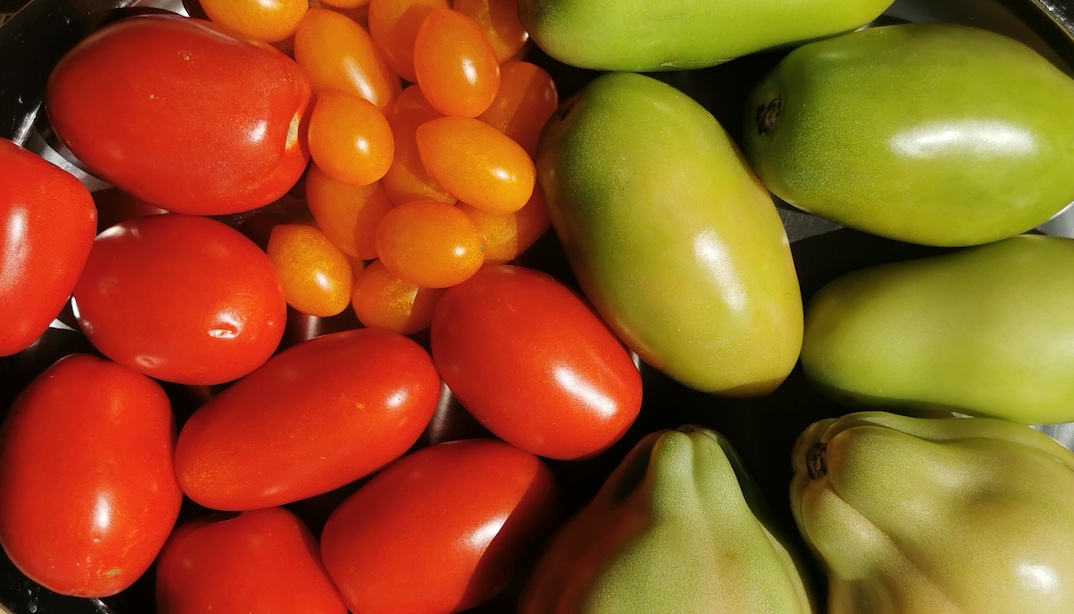Bucatini Amatriciana

Amatriciana, which means “from the town of Amatrice”, is a traditional Italian dish with an intense flavour that is guaranteed to enamour all meat lovers.
Its origins can be traced back to the beginning of the 19th century when the king of Naples, Joaquin Murat, noted that the shepherds of the neighbouring region of Lazio had began to add Neapolitan tomatoes to pasta a la gricia, a local dish made with guanciale, sheep cheese, and black pepper.
Amatriciana has since become world famous, so much so that after an earthquake almost destroyed the its hometown in 2016, dozens of restaurants and food retailers around the globe rallied to help those affected by the tragedy with generous monetary donations.
The power of good food!

INGREDIENTS
| Guanciale | 140 gr |
| Oblong tomato | 600 gr |
| Pecorino romano | 80 gr |
| White wine | 150 ml |
| Olive oil | 15 ml (1 tablespoon) |
| Pepe nero | To taste |
| Bucatini | 400 gr |

PREPARATION
PREPARE THE INGREDIENTS
- Cut the guanciale into small cubes about 1×1 cm (just less than half an each)
- Peel the tomatoes: you can learn how to do it here.
- Cut the peeled tomatoes into pieces and then smash them with a fork.
PREPARE THE SAUCE
- Place the guanciale in a large frying pan with a drizzle of olive oil, then raise the heat to medium.
- Stir often until the lard has melted and the guanciale has become crispy.
- Add the white wine and raise the heat for a few seconds.
- Remove the guanciale cubes and drain them well; you can absorb any excess moisture by placing the cubes into a folded sheet of kitchen roll.
- Don’t throw away the fat from the guanciale cubes! Because you will need to…
- …place the peeled tomatoes in the pan with the fat.
- Cook on low heat for 15 minutes.
COOK THE PASTA
Five minutes or so after adding the tomatoes to the fat you can start cooking your bucatini.
- Place them in a pot of boiling water and cook for 10 minutes (follow the manufacturer’s instructions.)
- Drain the bucatini and transfer them to the pan where you are simmering the tomatoes.
- Raise the heat on high for a few seconds.
- Add the guanciale cubes and give it a good stir.

*Note*
Guanciale: There are many amatriciana variants, but the original requires guanciale, which is not exactly the same thing as bacon. Guanciale, which comes from the Italian word “guancia” (cheek) is er… the cheek of the pig and it is fatter than ordinary bacon.
Bucatini: You can make amatriciana with any long durum wheat flour pasta like spaghetti, but bucatini is the traditional choice for this dish. The beauty of this tube-shaped pasta is that the sauce seeps into the hole that runs through its length (bucatini comes from “buco” which means hole in Italian), enhancing the taste of every forkful.
Onion and garlic: despite what the internet may claim, they don’t belong to the traditional amatriciana recipe. If you use ripe san marzano tomatoes and real guanciale you won’t need anything else to create an amazing sauce.

SERVE & PAIR
Serve your dish
- Serve your bucatini amatriciana with abundant grated pecorino romano and black pepper.
Pair it with red wine
- If you want to be super-authentic choose a grape from central Italy, like Sangiovese or Montepulciano.
- If you would rather go for an international cultivar, moderately tannic varieties like Syrah and Merlot are good choices because in this dish the flavour of the meat overtakes the tomato’s innate acidity.


















